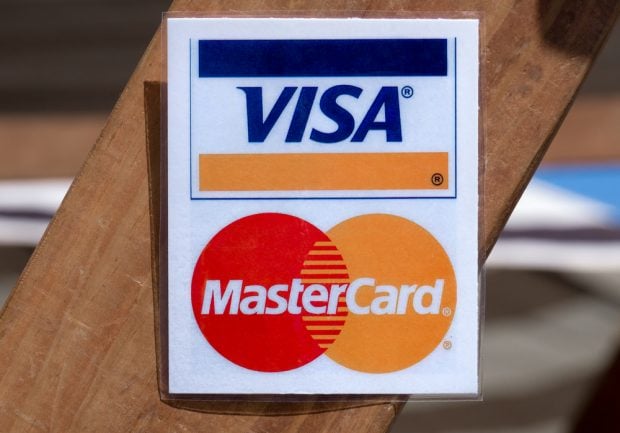A new study conducted by Lake Bluff, Ill.-basedeconomic research firm Moebs Services reveals that since theFederal Reserve's August 2010 implementation of Regulation E, whichrequires financial institutions to receive consumer approval priorto cover debit card and ATM overdrafts, CU overdraft transactionprices have remained flat at $25.
|CUs have also been careful to offer all four types of overdrafts(ATM, debit card, ACH and check). Fom 2010 to 2011, the percentageof credit unions offering all four increased from 50% to just 53%.That's a significant difference from banks, 74% of which offeredall four types of overdrafts in 2010 and 86% in 2011.
|The study, which is based on a June 2011 survey of 2,532financial institutions including 1,292 credit unions, states thatthe national median overdraft transaction price for all financialinstitutions is $28. The median price for community banks is $25,and for large banks it's $34.
|The only 2010-2011 median overdraft price change took place atlarge banks, which saw their median price fall by $1, MoebsServices CEO Mike Moebs said. The national median nonsufficientfunds return fee for all financial institutions was $28 in 2011, upfrom $27 in 2010.
|Moebs said he believes CUs could benefit from lowering theiroverdraft transaction prices. Especially as large banks eliminatetheir free checking products, credit unions could win checkingaccount holders by offering a lower overdraft transaction price, hesaid. He added that doing so would even put them up against acompetitor they may have never considered–the payday lender.
|“This is an opportunity for credit unions to gain market shareon checking accounts and substantially increase their revenuethrough overdrafts,” Moebs said. “With the Wall Street banksshedding their free checking, this is an ideal opportunity forcredit unions to say, 'I've got a lower price.'”
|The small increase seen in the percentage of credit unionsoffering all four types of overdrafts also leaves room forimprovement, Moebs said. “Out of the credit unions with a checkingaccount, only 47% offer all types of overdrafts,” he said. “That'sa huge loss of revenue.”
|The study also found that the number of credit unions offeringsavings account transfer and line of credit overdraft protectionservices has fallen sinceReg E. About 80% of CUs offered savings accounttransfer overdraft protection services in 2010, while 64% do today;around 55% of CUs provided line of credit overdraft protectionservices in 2010 and just 37% do so in 2011.
|Overdraft protection services data for all financialinstitutions also shows a decline–in 2009, 81% of credit unions andbanks offered an automatic transfer from a savings account and 70%do today; those offering a line of credit protection service fellfrom 63% in 2009 to 49% in 2011.
|Another significant finding of the Moebs Services study is thatconsumers are using overdrafts at a more rapid rate. Since Reg E,more than 77% of consumers in the U.S. chose to allow for debitcard and ATM overdrafts, which Moebs pointed out is more than 100million checking account consumers.
|“What many regulators do not understand is that Reg E asintroduced by the Federal Reserve in 2009 and implemented in 2010 has changed consumer behavior to regardoverdrafts as safety nets and no longer as a penalty,” Moebs said.“Because of the added federal scrutiny, banks are unable to providea safety net to their consumers with overdrafts and are thereforecutting the regulatory burden by cutting services.”
|Moebs Services' high opt-in numbers didn't surprise FileneResearch Institute Research Director Ben Rogers. According toFilene, 11% of credit union members were repeat overdraft users in2009; Rogers said those heavy users were likely to opt in becauseoverdraft had become a standard part of their lives, and the other89% were also likely to opt in because the safety net idea appealedto them.
|The data “confirm what a lot of managers already knew–thatmembers, especially heavy overdraft users, were treating overdraftas a day-to-day money management tool,” Rogers said. “Most of thecredit unions I've spoken to have been proactive about promotingthe service and getting members to opt in. That marketing push,coupled with the fact that most members are more likely to changetheir hair color than their long-term money management habits, madethe switch a lot more automatic than most had assumed it wouldbe.”
|The $680 million, Plymouth, Minn.-based TruStone FinancialFederal Credit Union said since Reg E, the opt-in rate for the CU'sdebit card and ATM overdraft service (called Privilege Pay PLUS),is at around 15%.
|However, the opt-in rate for its “regular users” (those who usedebit card and ATM overdrafts more than five times per year) is atabout 90%. The credit union has also seen an expected slightdecline in overdraft fee revenue since Reg E. TruStoneFinancial FCU offers savings account transfer and line ofcredit overdraft protection services, and its overdraft price is$30.
|TruStone Operations Manager Lorri Kulberg said the CU's biggesthurdle during the Reg E opt-in process has been getting members torespond to the standard overdraft communication set forth by theFederal Reserve, which did not include terms they are used tohearing such as “ODP” and “Privilege Pay.”
|“Some are thinking we are trying to be sneaky and aren't surewhat to do,” Kulberg said. “And, as is human nature, when peopledon't know what to do, they do nothing. Lastly, we are finding thatsome people disregard the letter because they think they havealready opted in.”
|The CU later distributed supplementary overdraft communication,which brought its total opt-in percentage from 11% to 15%, and thatnumber continues to increase, the CU said.
Complete your profile to continue reading and get FREE access to CUTimes.com, part of your ALM digital membership.
Your access to unlimited CUTimes.com content isn’t changing.
Once you are an ALM digital member, you’ll receive:
- Critical CUTimes.com information including comprehensive product and service provider listings via the Marketplace Directory, CU Careers, resources from industry leaders, webcasts, and breaking news, analysis and more with our informative Newsletters.
- Exclusive discounts on ALM and CU Times events.
- Access to other award-winning ALM websites including Law.com and GlobeSt.com.
Already have an account? Sign In
© 2024 ALM Global, LLC, All Rights Reserved. Request academic re-use from www.copyright.com. All other uses, submit a request to [email protected]. For more information visit Asset & Logo Licensing.









